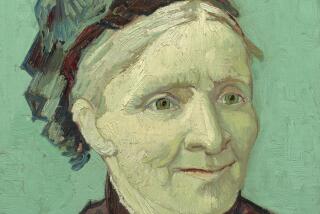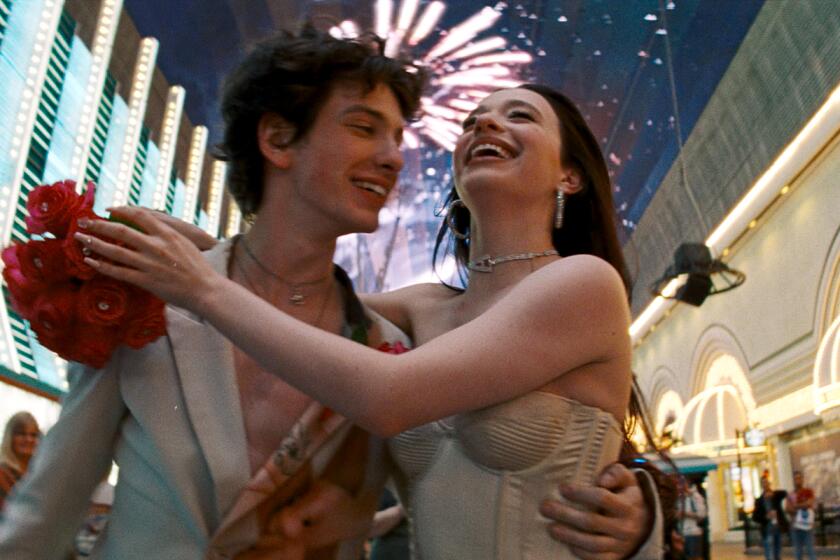La Cienega Area
- Share via
Jay de Feo is about 58, which is only one of the things that qualify her as a veteran San Francisco Bay Area abstract artist. Her history unfolds from the legendary days of L.A.’s Ferus Gallery to the old Pasadena Museum where she showed a huge gray painting she’d worked on for years. Shaped like a kind of mandala starburst, it had so many layers it looked like a sculpture and was so heavy and unwieldy it took a crane to get it out of her studio.
She was out of L.A.’s sight for years, then made a strong comeback with a group of smart, gutsy big paintings. This time she shows about 20, including works on paper. The largest paintings look dangerously slick with their combinations of heroic smooth curves, bulky girderlike geometries and bravura slash-and-drip patches. Compositions tend to neutral or night-sky blues that wind up to boffo centers, as if a big orange bulldozer had driven into them. Titles like “Geisha” and “Samurai” suggest that this sally into the decorative and the theatrical is conscious but irresistible, like a flirtation carried on with a dangerous partner.
She leaves the odd romance in smaller works, like several called “Alabama Hills.” Dun-colored or gray, they drop rationalized special effects to come up with authentic responses and surprises.
Donald Roller Wilson’s art has always seemed to be out to irritate the prissy and give a laugh to flatulent good humor. This guy actually paints chimpanzees dressed as people leering over their bananas that out-vulgar even their schlock sources. The tiny paintings in this present batch are relatively subtle and profit from restraint. The main actors are minutely executed cigarette butts, wooden match heads and baby-bottle nipples that sweat like the lemons in those rich-kitsch still lifes you see in Beverly Hills establishments that pass for art galleries.
Sometimes the butts float surrealistically in landscapes that look like something left over from the Dust Bowl. They are often referred to as “Mrs. Jones’ butt.” Could that be a double-entendre? Nah. They often have long narrative titles. A short example is “Mrs. Jenkins’ kitchen match was too wet to light.” Sexual symbolism? Nah. Too obvious.
Wilson’s raunchy pokes at poetic obliqueness are so lumpish they’re almost lovable, and perhaps intentionally so. The freshest frisson here is a kind of lurking craziness that recalls the old Bobby Gentry song “Ode to Billy Joe.” (Jan Turner Gallery, 8000 Melrose Ave., to March 19.)
More to Read
The biggest entertainment stories
Get our big stories about Hollywood, film, television, music, arts, culture and more right in your inbox as soon as they publish.
You may occasionally receive promotional content from the Los Angeles Times.










